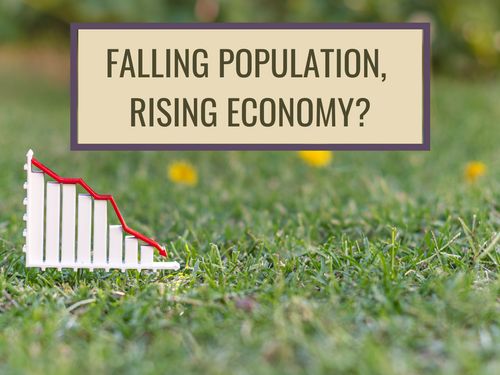Is Economic Growth Without Population Growth Possible?
Jul 18, 2021 · 2 mins read
0
Share

Ruchir Sharma outlines the political, social and economic factors that make a country successful in his book, 10 Rules for Successful Nations. Below are the most important ideas from his chapter on population, and how successful nations can fight demographic decline.👇👇👇
Save
Share
Population growth and economic growth are tightly bound. 1000 years of data shows that population increases are responsible for 50% of economic growth. When population growth didn't exceed 0.5%, global economic growth did not exceed 1%.
Save
Share
The 2% Pace Test. "If a country’s working-age population growth rate is not above 2%, the country is not likely to enjoy a long economic boom." In the 80s, the largest emerging economies had labor force growth of over 2%. By 2020, most were only at 1%.
Save
Share
For population growth to translate into economic growth, supporting factors are necessary. To realize the demographic advantage, governments need to educate and skill their young workers well.
Save
Share
Nonetheless, it's nearly impossible to get economic growth with a shrinking population. The EU also expressed this sentiment in 2005. It found that when the working age population of a country shrunk over a decade, average GDP growth stayed below 1.5%. How to tackle this problem?
Save
Share
Immigration. Productivity growth across the world seems to be converging - so the only relevant competitive advantage now is population growth. The edge that the U.S. has over, say, Japan is more due to migrants than it is to Silicon Valley.
Save
Share
Women's labor force participation. Countries with the most skewed gender imbalances have a lot to gain. The OECD estimates that if women's labor force participation is pushed to over 40%, countries like Italy could see a GDP growth of over 20% by 2030.
Save
Share
Welcome back the retirees. Retires still want to be engaged in meaningful work, and countries have started reintegrating them into the workforce. Germany has raised the retirement age from 65 to 67. Italy and Portugal have pegged retirement age to increases in life expectancy.
Save
Share
Use robots to drive growth. Robots trigger fears. However, "the revolution is gradual enough to complement rather than destroy the workforce". US banks have thousands of automated tellers. This led them to expand and employ more. Human tellers have increased by 50k since the 80s.
Save
Share
Bottom Line: Population growth and economic growth are intricately linked. To keep growing the economy while the population shrinks, countries can tap into immigration, increasing women’s participation, retirees, and robots.
Save
Share
0